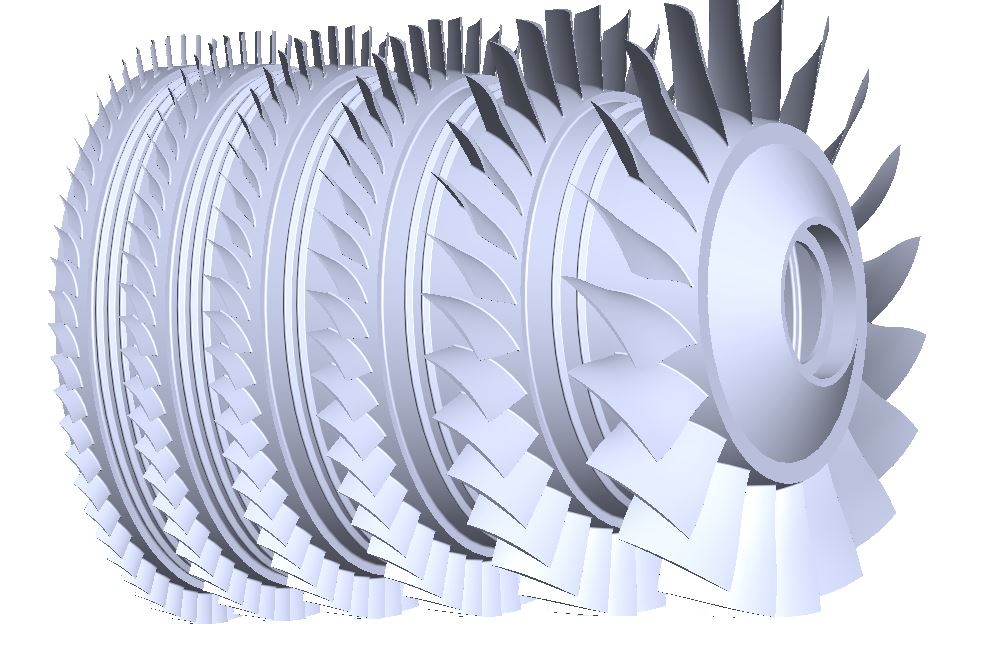- +(91) 4023006097 ,
- +(91) 4035944424
- +(91) 7989111457
- ask@adyahaways.in
- Mon - Sat 8:00 - 21:00, Sunday - CLOSED


Turbomachinery is widely used in the oil and gas, energy and aerospace industries. The efficiency of these machines is often an important factor and has led to constant efforts to improve the design to achieve better efficiency. An axial flow compressor is a major component of a gas turbine, and the overall performance of the turbine is strongly dependent on the compressor performance. Traditional analysis of axial compressors includes flow calculations, isolated vane passage analysis, Quasi-3D vane-vane analysis, single-stage (rotor-stator) analysis, and multi-stage analysis involving larger design cycles.

In this research, the detailed flow through a 15-stage axial compressor is analyzed using a 3-D Navier Stokes CFD solver in a parallel computing environment. A methodology for analyzing the steady state (frozen rotor stator) of one sheet pass per component is described. Various effects such as mesh type and density, boundary conditions, tip clearance, and numerical issues such as turbulence model selection, advection model selection, and parallel processing performance are analyzed. A high sensitivity of the predictions to the above was found. A physical explanation of the flow properties observed in the computational study. The total pressure rise against the mass flow rate was calculated and agreed with the data provided to us.
We have done CFD analysis of improved compressure blade and passage for increasing the pressure ratio. One important aspect of CFD simulation is efficient mesh generation. There are different types of grids are available and are classified into structured, unstructured or hybrid grids. The multiblock hexahedral structured mesh provides an effective mesh/grid for curved surfaces in the case of vane machines. By using it, an excellent resolution of the boundary layer on the blade is achieved Numerical study was conducted based on y-plus and the number of nodes, where y-plus is the dimensionless distance from the wall. Since the effect of turbulence and boundary layer changes predominate in regions closer to the blades, mesh refinement is performed in the mesh generation region. A value of y-plus 10 is chosen for further analysis, this reduces computational time and complexity. the compressore blade and passage has been designed in such a way that there is an improvements in efficiency is more than 10%.
